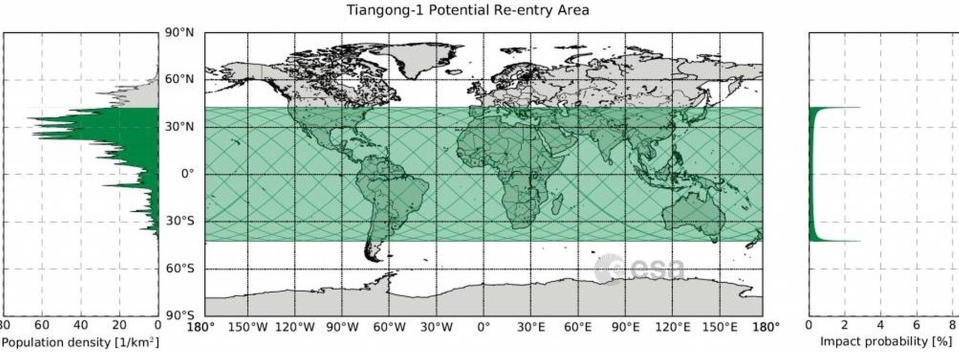China's Big Space Lab May Fall to Earth This Month
The European Space Agency (ESA) has issued a new re-entry forecast for China's Tiangong-1 space lab.
The 8.5-ton spacecraft is now expected to fall into Earth's atmosphere between March 24 and April 19, though ESA officials stressed that this is a rough estimate.
"Re-entry will take place anywhere between 43 degrees north and 43 degrees south (e.g. Spain, France, Portugal, Greece, etc.)" latitude, officials with the Space Debris Office at ESA’s European Space Operations Center in Darmstadt, Germany, wrote in an update last week. "Areas outside of these latitudes can be excluded. At no time will a precise time/location prediction from ESA be possible."
Tiangong-1 was the first space lab built by China. It launched in late September 2011, to help the nation master the technologies needed to construct and operate a crewed space station. China aims to have such a station up and running in Earth orbit by the 2020s.

The first Chinese orbital docking occurred between Tiangong-1 and an unpiloted Shenzhou spacecraft on Nov. 2, 2011. Two crewed missions later visited Tiangong-1: Shenzhou 9 and Shenzhou 10, which launched in June 2012 and June 2013, respectively.
Leonard David is author of "Mars: Our Future on the Red Planet," published by National Geographic. The book is a companion to the National Geographic Channel series "Mars." A longtime writer for Space.com, David has been reporting on the space industry for more than five decades. Follow us @Spacedotcom, Facebook or Google+. This version of the story published on Space.com.

 Yahoo News
Yahoo News 
